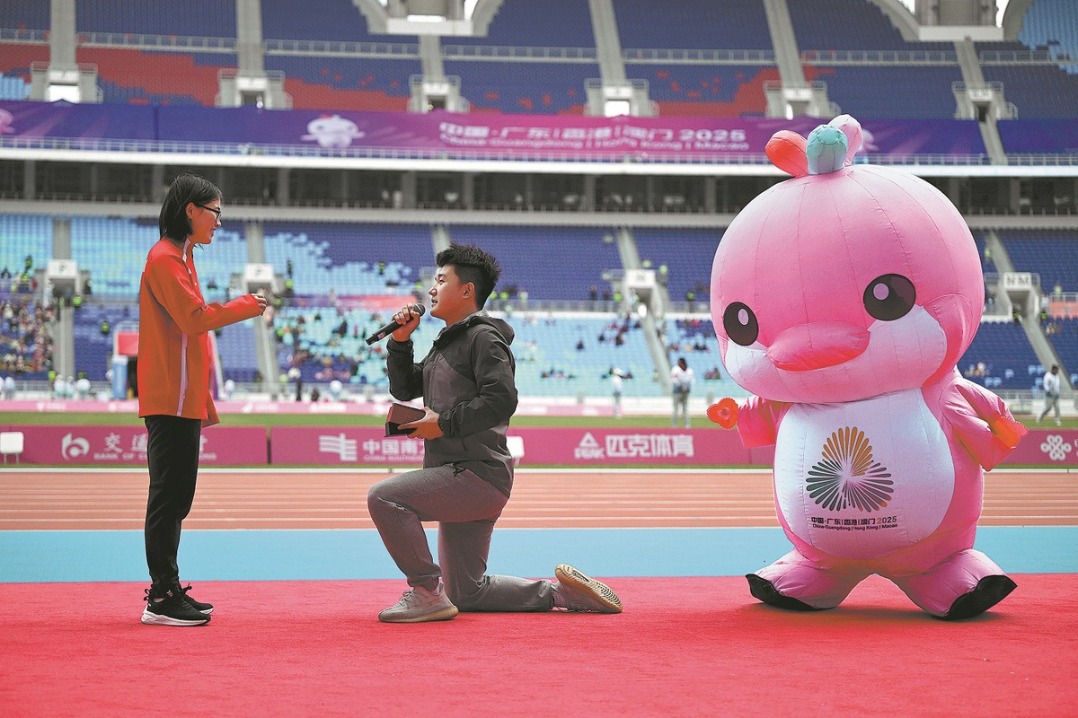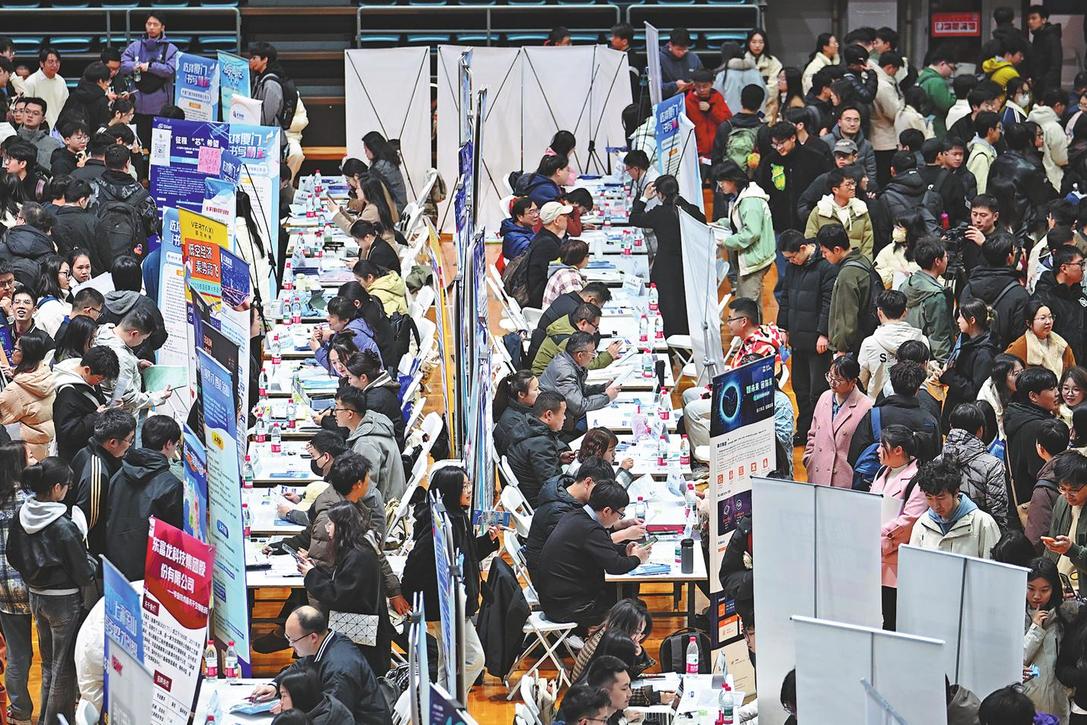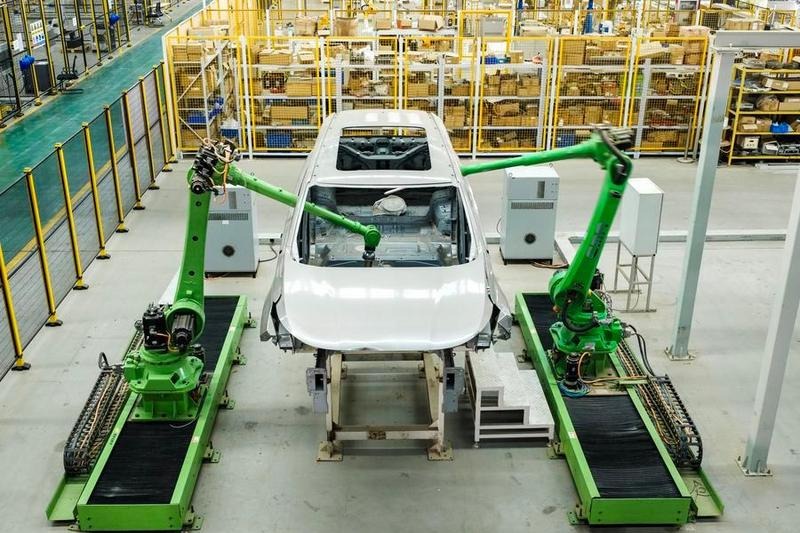Building the cultural flow
Sprouting along the banks of the Grand Canal in Beijing's Tongzhou district, a trio of innovative new structures, which will enhance the city's intellectual and artistic landscape, is nearing completion, Yang Feiyue reports.

When looking out across the lush forest along the banks of the Grand Canal, three major landmarks will jump into view.
They have emerged at the far end of the grand Central Green Forest Park in Tongzhou district, a subcenter of Beijing, and now form a recognizable part of the skyline.
Almost ready to be opened to the public, the buildings that will serve as a theater, a museum and a library, respectively, are expected to add to the vibrant cultural atmosphere in the capital city.
The theater was the first to take shape, and workers have been busy on the site with the interior decor, hoping to wrap up the whole construction this month. The exterior facade, adorned with over 4,000 folded aluminum panels, gives it a stunning beauty against the backdrop of the blue sky.
"The design concept draws inspiration from the ancient granaries along the canal in Tongzhou," says Jiang Tao, who is in charge of the theater's operation management.
Proximity to the canal and the forest scenery is also perfect for future outdoor music festival and immersive theater performances, Jiang adds.
The art center in Tongzhou features multiple cultural venues, including a concert hall and an opera house, and will offer a combined seating capacity of approximately 5,700 seats. It will be run by the National Centre for the Performing Arts.
Jiang says that all of the venues have their own backstage areas, while having access to some shared makeup rooms and passageways, in order to better utilize the space.
"We have formulated a five-year development plan from 2023 to 2027, with the aim of gradually achieving an annual schedule of 600 events, with 650 performances," Jiang says, adding that this level of activity is nearly equivalent to the scale of the National Centre for the Performing Arts.
The shows staged at the Tongzhou theater will be more focused on the needs of young people and families and thus lean toward more diverse performance forms such as musicals, plays and dances, immersive plays and outdoor concerts that can help create a relaxed and joyful atmosphere, he says.
The theater will also incorporate elements of the canal and the culture characteristic of the Beijing-Tianjin-Hebei region to distinguish itself from the NCPA.
"In addition to the performances, we want to create a comprehensive platform for artistic experiences, organize activities that involve the audience, launch more educational initiatives and nurture young talent," Jiang says.
Within walking distance, the museum gives off a distinctively elegant vibe with an exterior primarily composed of natural stone and transparent glass curtain walls. Seen from the inside, five sail-shaped ceilings are arranged at varying heights, with graceful curves and orange-tinted glass, while the walls are adorned with wooden finishes, creating a nostalgic and classic atmosphere.
"The design concept is rooted in three elements from the imagery of the ancient Grand Canal, that is, boats, sails and water," says Zhang Yu, an official with the museum project.
"Taking the Grand Canal as a guiding thread, historical and cultural elements are integrated into the architecture, transforming it into a 'nostalgic sail' and a 'canal vessel' nestled within the urban forest and enriching the cityscape with historical charm," Zhang adds.
The audience hall at the northern side encompasses various functional spaces, including open exhibitions, restaurants, a cafe and rooms for lectures and educational activities. The main building area in the south will serve as an exhibition space, with an area for cultural artifact restoration and storage. There will be a special hall dedicated to Beijing and the Grand Canal on the second floor.
Zhang reveals that most of the exhibits will come from the Capital Museum.
Last year, the Tongzhou museum operator also issued a global call for exhibits related to the Grand Canal, and has been gathering items from home and abroad that are associated with the canal's history and culture.
"To deepen the audience's understanding of the cultural relics and enhance their experience, the Tongzhou museum will set aside an area for the public to observe the cultural relic protection and restoration process," Zhang says.
A stone's throw from the museum lies the library that promises book lovers a forest ambience conducive to reading. Its design highlights the ginkgo tree, using its imagery throughout the space.
The ceiling is designed with stacked ginkgo leaf-shaped patterns, and the 144 columns within the library resemble the trunks of ginkgo trees. The grand and transparent glass curtain walls blur the boundary between the building and nature, allowing readers to admire the picturesque scenery of the forest park right outside.
In the future, readers will be able to sit comfortably on the ground and enjoy a sense of happiness while surrounded by books, says Li Nianzu, deputy director of the Capital Library of China, which will run the Tongzhou library.
"The terraced landscape offers excellent scenery, allowing visitors to read wherever they go," Li says.
The new library will feature an intangible cultural heritage-themed area, where librarians will use Beijing's traditional hutong (alleyways) as a starting point, combining artifacts, historical documents and multimedia technology to create an immersive journey through the capital city.
"Readers can get a feel for the ancient capital, gaining an insight into the daily life, customs, traditions and leisure activities of old Beijing," Li says.
They will also have the opportunity to enjoy live demonstrations by inheritors of intangible cultural heritage.
A special area for children is reserved to offer professional reading guidance and stage reading activities. Children will also be able to engage in immersive reading and creative exchanges through modern facilities like smart displays and 4D screenings, Li says.
The library has a vinyl record section, where readers can pick a record of their choice and immerse themselves in the nostalgic melodies of the past. There will also be an ancient literature experience zone where visitors can pick up professional tools and get a hands-on restoration experience with master craftspeople.
Light meals, coffee and creative cultural items will also be available in a multimedia space, where readers can use their smartphones to reserve seats, access documents and register for various types of resources, Li says. Big data technology will be used to generate personalized reading services, based on past reading preferences.
The Tongzhou library is equipped with 2,400 seats and has a collection of around 8 million volumes.
Besides the books visible on open shelves, there are 7.1 million volumes of books stored in the library's underground repository, Li says.
The library boasts China's largest mechanized storage system, with an area of about 3,000 square meters. An efficient, automatic book sorting and delivery system has been installed to provide readers with the books they want, Li adds.
Covering a total construction area of approximately 600,000 sq m, the three buildings are expected to be completed and ready for inspection by the end of September, according to Sha Gang, deputy project manager from the Beijing Investment Group.
The start of building work on the project marked the initiation of the city subcenter's urban development framework and the ongoing enhancement of its urban functions, Sha says.
"It represents a crucial measure in our city's efforts to advance the construction of the national cultural center, promote the development of the Grand Canal cultural belt, and better fulfill the growing cultural needs of the public," he adds.
The project has also transformed the area into a sponge environment, through features, such as sunken green spaces, permeable pavements and a landscape water system along the historical canal route.
By incorporating a hybrid energy system, primarily using ground-source heat pumps and photovoltaic power generation, the project can deliver a low-carbon and green energy lifestyle.
"Calculations show that such measures are projected to reduce carbon dioxide emissions by approximately 10,000 metric tons annually compared to similar public buildings without them," Sha says.
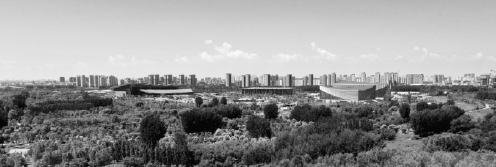
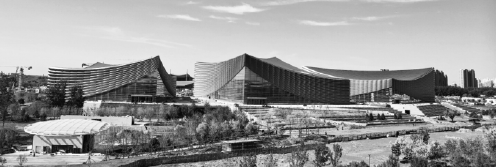
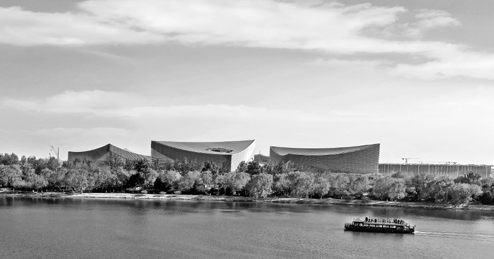
Today's Top News
- UN envoy calls on Japan to retract Taiwan comments
- Innovation to give edge in frontier sectors
- Sanctions on Japan's former senior official announced
- Xi stresses importance of raising minors' moral standards
- Coordinated reform key to country's growth
- Shandong gives new life to traditions


















